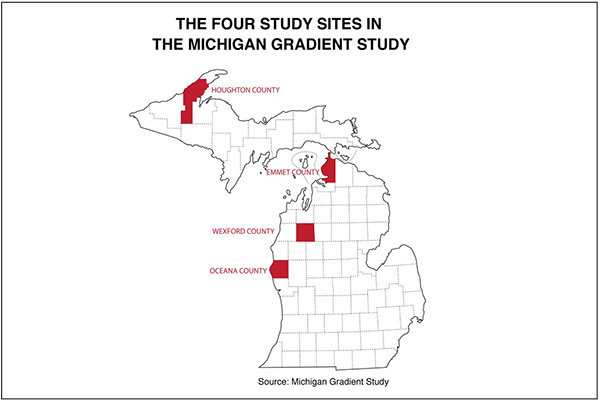
Full Text:
Though Michigan's sugar maples benefit from the growth-promoting effects of nitrogen compounds in the environment, those gains will not fully offset the added stresses of growing under a drier climate in the future, according to a new study. Sugar maples, known for their fiery fall foliage and as the main source of maple syrup, are a dominant tree species in the northern hardwood forests of eastern North America.
They are found mainly in moist, well-drained soils and are drought-sensitive. Some climate forecasts for the Upper Great Lakes region in the coming decades call for warmer temperatures and an increased likelihood of summer drought, conditions that could prove stressful for sugar maples and other trees. Climate scientists and forest ecologists have long wondered whether the fertilizing effects of human-derived nitrogen would be enough to offset added stresses produced by a warmer, drier climate. The new study, based on 20 years of data from four forest sites in both Michigan peninsulas, concludes that nitrogen deposition from human activities "will not fully compensate for the negative effects of growing under the drier forecasted climates."Image credit: University of Michigan News/Michigan Gradient Study